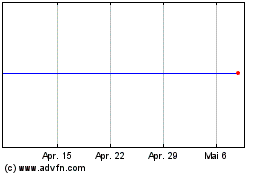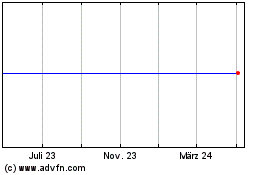FORM 6-K
SECURITIES
AND EXCHANGE COMMISSION
Washington,
D.C. 20549
Report
of Foreign Issuer
Pursuant
to Rule 13a-16 or 15d-16 of
the
Securities Exchange Act of 1934
For the
month of August 2022
Commission
File Number: 001-11960
AstraZeneca PLC
1
Francis Crick Avenue
Cambridge
Biomedical Campus
Cambridge
CB2 0AA
United
Kingdom
Indicate
by check mark whether the registrant files or will file annual
reports under cover of Form 20-F or Form 40-F.
Form
20-F X Form 40-F __
Indicate
by check mark if the registrant is submitting the Form 6-K in paper
as permitted by Regulation S-T Rule 101(b)(1):
Indicate
by check mark if the registrant is submitting the Form 6-K in paper
as permitted by Regulation S-T Rule 101(b)(7): ______
Indicate
by check mark whether the registrant by furnishing the information
contained in this Form is also thereby furnishing the information
to the Commission pursuant to Rule 12g3-2(b) under the Securities
Exchange Act of 1934.
Yes __
No X
If
“Yes” is marked, indicate below the file number
assigned to the Registrant in connection with Rule 12g3-2(b):
82-_____________
AstraZeneca PLC
INDEX
TO EXHIBITS
1.
Farxiga shows CV mortality benefit across EF
range
30 August 2022 07:01 BST
New data show Farxiga significantly lowers the risk of
cardiovascular death in patients with heart
failure
Pre-specified pooled analysis from Phase III trials demonstrated
reduction in CV death by 14% and reduction in death from any cause
by 10% in patients with heart failure irrespective of ejection
fraction
First heart failure medication to demonstrate mortality benefit
across the full ejection fraction range
Results being presented at the European Society of Cardiology
annual meeting and simultaneously published in Nature
Medicine
Today, new results from a pre-specified, patient level, pooled
analysis from the Phase III DAPA-HF and DELIVER trials demonstrated
mortality benefit of Farxiga (dapagliflozin), compared to placebo, in
patients with heart failure (HF). These results were presented at
the European Society of Cardiology Congress 2022 in Barcelona,
Spain and simultaneously published in Nature
Medicine1.
The reduction in risk of cardiovascular (CV) death was consistent
across pre-specified subgroups and is the first analysis to
demonstrate a mortality benefit with a HF medication in patients
with HF across the left ventricular ejection fraction (LVEF)
range.
The analysis showed that Farxiga reduced the risk of CV death by 14% (p=0.01,
absolute risk reduction [ARR] 1.5%) over the median follow-up of 22
months, death from any cause by 10% (p=0.03, ARR 1.5%), total
(first and repeat) hospitalisation for HF by 29% (p < 0.001, ARR
6%), and the composite of death from CV causes, myocardial
infarction, or stroke by 10% (p=0.045, ARR 1.3%), in patients with
HF irrespective of LVEF1.
Prof. John McMurray, Professor of Medical Cardiology and Deputy
Director of the Institute of Cardiovascular and Medical Sciences at
the University of Glasgow, UK, said: "In this patient-level
meta-analysis including over 11,000 patients with heart failure
across the full range of ejection fraction, dapagliflozin reduced
the risk of both cardiovascular death and heart failure
hospitalisation. These results underpin the valuable role
dapagliflozin can play in clinical practice, as we can initiate
treatment right away while waiting for ejection fraction to be
measured."
Mene Pangalos, Executive Vice President, BioPharmaceuticals
R&D, AstraZeneca, said:
"Heart failure remains one of the leading causes of death worldwide
with high unmet need for some 64 million people. This analysis
demonstrates Farxiga's ability to treat patients across the full left
ventricular ejection fraction spectrum and reduce the risk of
cardiovascular death."
The DAPA-HF and DELIVER Phase III trials were randomised and
double-blind, comparing Farxiga to placebo. Each trial enrolled
patients with a diagnosis of HF, functional limitation, and
elevated natriuretic peptides. The principal difference between the
two trials was that patients with an LVEF of 40% or less were
randomised in DAPA-HF and those with a LVEF greater than 40% in
DELIVER3,4. The
studies included 11,007 individuals with HF across 20 countries in
each trial.
Notes
HF
HF is a chronic, long-term condition that worsens over
time5.
It affects nearly 64 million people globally and is associated
with substantial morbidity and mortality6,7. Chronic
HF is the leading cause of hospitalisation for those over the age
of 65 and represents a significant clinical and economic
burden8.
There are several types of HF often defined by LVEF, a measurement
of the percentage of blood leaving the heart each time it
contracts, including: HF with reduced EF (HFrEF, LVEF less than or
equal to 40%), HF with mildly reduced EF (HFmrEF, LVEF
41-49%) and HF with preserved EF (HFpEF, LVEF greater than or
equal to 50%)9.
Approximately half of all HF patients have HFmrEF or HFpEF, with
few therapeutic options available9,10.
DAPA-HF
DAPA-HF (Dapagliflozin And Prevention of Adverse-outcomes in Heart
Failure) was an international, multi-centre, parallel-group,
randomised, double-blinded Phase III trial in 4,744 patients with
HFrEF, with and without type-2 diabetes (T2D), designed to evaluate
the effect of Farxiga 10mg,
compared with placebo, given once daily in addition to standard of
care (SoC) consisting of an angiotensin-converting enzyme inhibitor
(ACEi) or an angiotensin receptor blocker (ARB). The primary
composite endpoint was time to the first occurrence of a worsening
HF event (hospitalisation or equivalent event, i.e. an urgent HF
visit), or CV death. The median duration of follow-up was 18.2
months2,4.
The secondary endpoint included the total number of
hospitalisations for HF (hHF, including repeat admissions) and CV
deaths, change from baseline to 8 months in the total symptom score
on the Kansas City Cardiomyopathy Questionnaire
(KCCQ)4.
DELIVER
DELIVER was an international, randomised, double-blind,
parallel-group, placebo-controlled, event-driven Phase III trial
designed to evaluate the efficacy of Farxiga, compared with placebo, in the treatment of HF
patients with LVEF greater than 40%, with or without
T2D. Farxiga was given once daily in addition to
background therapy (regional SoC for all comorbidities, including
diabetes and hypertension, with the exception of concomitant use of
a sodium-glucose cotransporter 2 (SGLT2)
inhibitor)3.DELIVER
is the largest clinical trial to date in HF patients with LVEF
above 40%, with 6,263 randomised patients1,3.
The primary endpoint was the time to first occurrence of CV death,
hHF or an urgent HF visit. The secondary endpoint includes the
total number of HF events (hHF or urgent HF visit) and CV death,
change from baseline in the total symptom score of the KCCQ at
eight months, time to the occurrence of CV death and time to the
occurrence of death from any cause3.
Farxiga
Farxiga (dapagliflozin) is
a first-in-class, oral, once-daily SGLT2 inhibitor. Research has
shown Farxiga's efficacy in preventing and delaying
cardiorenal disease, while also protecting the organs - important
findings given the underlying links between the heart, kidneys and
pancreas4,11,12. Damage
to one of these organs can cause the other organs to fail,
contributing to leading causes of death worldwide, including T2D,
HF and chronic kidney disease (CKD)6,13-15.
Farxiga is
approved in adults and children aged 10 years and above for the
treatment of insufficiently controlled type-2 diabetes mellitus as
an adjunct to diet and exercise. Farxiga is
also approved for the treatment of HFrEF and the treatment of CKD
based on the findings of the DAPA-HF and DAPA-CKD Phase III
trials.
DapaCare is a robust programme of clinical trials to evaluate the
potential CV, renal and organ protection benefits
of Farxiga.
It includes more than 35 completed and ongoing Phase IIb/III trials
in more than 35,000 patients, as well as more than 2.5 million
patient-years' experience. Farxiga is
currently being tested in patients without T2D following an acute
myocardial infarction or heart attack in the DAPA-MI Phase III
trial - a first of its kind, indication-seeking registry-based
randomised controlled trial.
AstraZeneca in CVRM
Cardiovascular, Renal and Metabolism (CVRM), part of
BioPharmaceuticals, forms one of AstraZeneca's main disease areas
and is a key growth driver for the Company. By following the
science to understand more clearly the underlying links between the
heart, kidneys and pancreas, AstraZeneca is investing in a
portfolio of medicines for organ protection and improving outcomes
by slowing disease progression, reducing risks and tackling
co-morbidities. The Company's ambition is to modify or halt the
natural course of CVRM diseases and potentially regenerate organs
and restore function, by continuing to deliver transformative
science that improves treatment practices and CV health for
millions of patients worldwide.
AstraZeneca
AstraZeneca (LSE/STO/Nasdaq: AZN) is a global, science-led
biopharmaceutical company that focuses on the discovery,
development, and commercialisation of prescription medicines in
Oncology, Rare Diseases, and BioPharmaceuticals, including
Cardiovascular, Renal & Metabolism, and Respiratory &
Immunology. Based in Cambridge, UK, AstraZeneca operates in over
100 countries and its innovative medicines are used by millions of
patients worldwide. Please visit astrazeneca.com and
follow the Company on Twitter @AstraZeneca.
Contacts
For details on how to contact the Investor Relations Team, please
click here.
For Media contacts, click here.
References
1. Jhund P, et al.
Dapagliflozin and outcomes across the range of ejection fraction in
patients with heart failure: a patient-level pooled analysis of
DAPA-HF and DELIVER. Nature
Medicine [cited 2022 Aug 27]
Available from: https://www.nature.com/articles/s41591-022-01971-4
2. Solomon SD, et al. Dapagliflozin in
heart failure with preserved and mildly reduced ejection fraction:
rationale and design of the DELIVER trial. Eur J Heart
Fail 2021;
23(7):1217-25.
3. McMurray
JJV, et al. Dapagliflozin in patients with heart failure and
reduced ejection fraction. N Engl J
Med 2019;
381(21):1995-2008.
4. Cleveland
Clinic [Internet]. Heart failure; [cited 2022 Jul 14] Available
from: https://my.clevelandclinic.org/health/diseases/17069-heart-failure-understanding-heart-failure
5. Vos T, et al. Global,
regional, and national incidence, prevalence, and years lived with
disability for 328 diseases and injuries for 195 countries,
1990-2016: A systematic analysis for the Global Burden of Disease
Study 2016. Lancet 2017;
390(10100):1211-59.
6. Mozaffarian D, et al. Heart
disease and stroke statistics-2016 update. Circulation. 2016; 133(4):e38-360.
7. Azad N, et al. Management of
chronic heart failure in the older
population. J Geriatr
Cardiol. 2014;
11(4):329-37.
8. Heidenreich PA, et al. 2022
AHA/ACC/HFSA Guideline for the Management of Heart Failure: A
report of the American College of Cardiology/American Heart
Association Joint Committee on Clinical Practice
Guidelines. J Am Coll
Cardiol. 2022;79(17):e263-421.
9. Dunlay SM, et al. Epidemiology
of heart failure with preserved ejection
fraction. Nat Rev
Cardiol 2017;14(10):591-602.
10. Heerspink HJL, et al. Dapagliflozin in
patients with chronic kidney disease. N Engl J
Med 2020;
383(15):1436-46.
11. Wiviott SD, et al. for the DECLARE-TIMI
58 Investigators. Dapagliflozin and cardiovascular outcomes in
type-2 diabetes [article and supplementary
appendix]. N Engl J
Med 2019;
380(4):347-57.
12. Mayo Clinic [Internet].
Heart failure, 2020; [cited 2022 Jul 14]. Available
from: https://www.mayoclinic.org/diseases-conditions/heart-failure/symptoms-causes/syc-20373142.
13. Centers for Disease
Control and Prevention (CDC) [Internet]. A snapshot: Diabetes in
the United States, 2020; [cited 2022 Jul 14]. Available
from: https://www.cdc.gov/diabetes/library/socialmedia/infographics/diabetes.html.
14. National Institute of
Diabetes and Digestive and Kidney Diseases (NIDDK) [Internet].
Heart disease & kidney disease, 2016; [cited 2022 Jul 14].
Available from: https://www.niddk.nih.gov/health-information/kidney-disease/heart-disease.
Adrian Kemp
Company Secretary
AstraZeneca PLC
SIGNATURES
Pursuant
to the requirements of the Securities Exchange Act of 1934, the
Registrant has duly caused this report to be signed on its behalf
by the undersigned, thereunto duly authorized.
Date:
30 August 2022
|
|
By: /s/
Adrian Kemp
|
|
|
Name:
Adrian Kemp
|
|
|
Title:
Company Secretary
|
AstraZeneca (NYSE:AZN)
Historical Stock Chart
Von Mär 2024 bis Apr 2024

AstraZeneca (NYSE:AZN)
Historical Stock Chart
Von Apr 2023 bis Apr 2024
